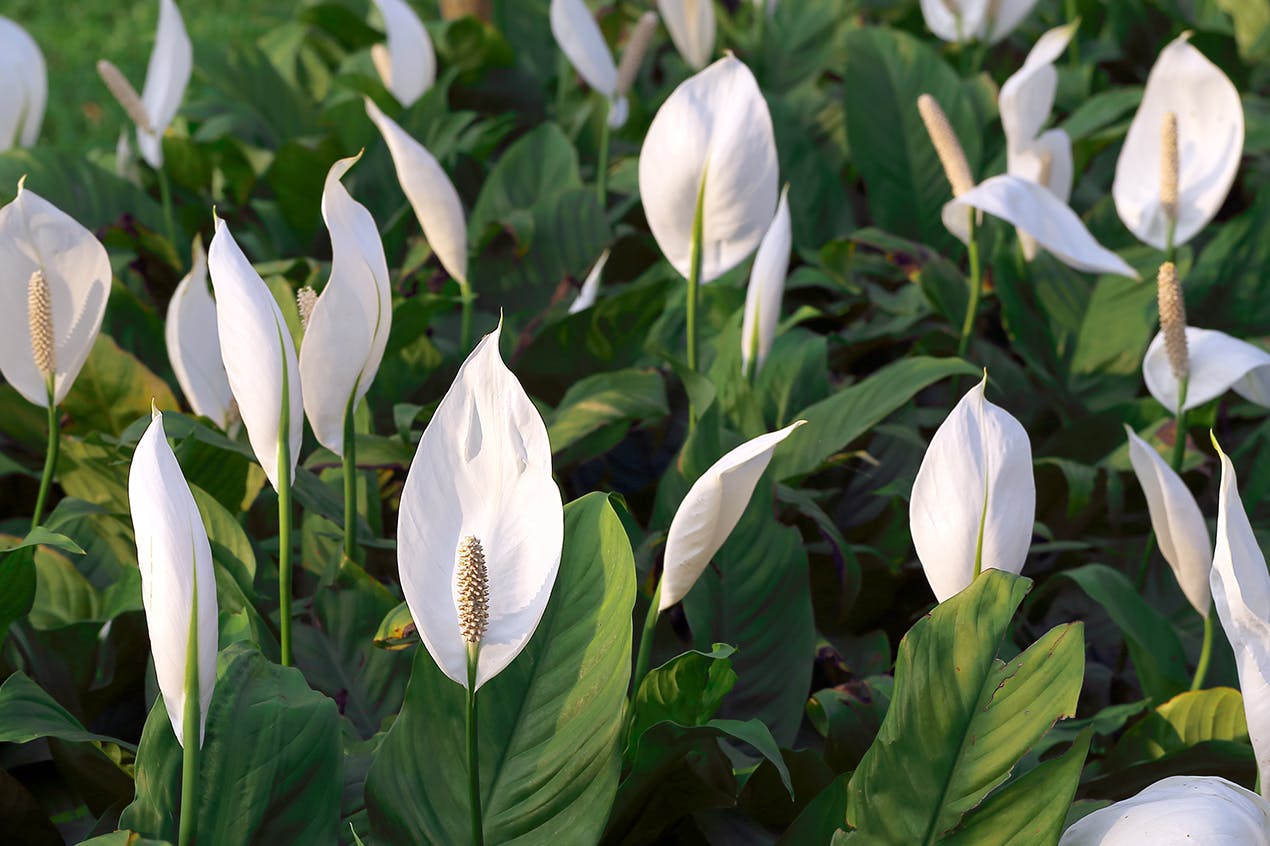Modern medicine and technology have come a long way in developing various aides to help us get the rest we need. Not sleeping well? Maybe a melatonin supplement could help. Too much noise in your house? Perhaps a white noise machine will help drown that out.
Want to purify the air in your home and sleep better? Incorporating specific plants into the design of your living and sleeping spaces can improve both the quality of your sleep and the quality of air you breathe. After all, studies point out that a bedroom with clean, fresh air promotes better sleep.
But what plants can help improve your sleep, and which ones are the best for clearing the air in your home? Keep reading to find out which plants you should add to your home.
1. Jasmine

A study by Wheeling Jesuit University found that the scent of jasmine led to greater sleep efficiency and reduced sleep movement. The study also found that when the participants woke from sleep, those who breathed jasmine rated their level of anxiety and vigor lower and performed cognitive tests more rapidly.
Researchers in Germany also found that a jasmine fragrance acted like a sleeping pill or mood enhancer. Simply breathing in a nose full of jasmine plant could have a very calming, sedative effect.
2. Valerian

A perennial flowering plant with a notable history, Valerian was used for medicinal purposes in both ancient Greece and Rome. It was prescribed by Hippocrates and in the second century by the famous Greek physician Galen, for insomnia.
A more recent study showed that the valerian plant helped induce an increase in slow-wave sleep (SWS), aka deep sleep.
3. Lavender

Lavender is one of the most commonly known flowering plants that helps induce sleep. Used as an essential oil or inhaled from a simple stem, the plant produces a unique floral scent that can be used as a solid sleep aid.
How? Studies show that lavender increases the percentage of deep sleep in both men and women. This proves that lavender can serve as a mild sedative and that it promotes deep sleep.
4. Snake plant

The snake plant commonly referred to as Mother-in-Law’s Tongue is a popular houseplant because it’s fairly easy to maintain. Tolerant of low light levels and irregular watering, the snake plant can be kept in your home and thrive with little maintenance.
NASA’s Clean Air Study found that the snake plant is one of the best plants for improved air quality since it absorbs many of the toxins found indoors. Just remember to keep this plant away from your furry friends!
5. Warneckei

NASA’s study also cites Warneckei (Warneckii), or Dracaena deremensis, as a great houseplant for beginners. It can tolerate low light, but also does very well with bright, indirect lighting and doesn’t need a lot of attention to thrive.
The Warneckei’s true benefits come from its purifying ability. It’s an ideal plant to rid your home of benzene, trichloroethylene, and formaldehyde. The downside? It’s toxic to animals, so make sure to keep this plant away from pets.
6. Peace lily

Not only are they a beautiful addition to any room, but peace lilies are also another one of NASA’s super plants. They are extra moist and produce extra humidity, helping reduce allergens. This plant is also not safe for pets, so make sure it’s placed in a high and hard-to-reach area.
7. English ivy

Studies show that English Ivy houseplants remove benzene, trichloroethylene, formaldehyde, xylene, and toluene. You’ll benefit from having a more pure and fresh sleep space. English ivy is also not pet-friendly.
It’s also important to note that NASA’s study proved that the exposure of soil was an important factor in the quality of air purification. To get the best results, maximize air exposure to the plant root. You may need to remove some foliage if it covers the potting soil.
For another natural sleep remedy, read our guide to nighttime baths and how they can improve how you snooze.




